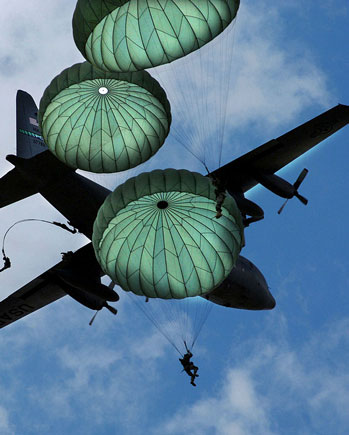[vc_row fullwidth=”true” css=”.vc_custom_1540566650622{background-position: center !important;background-repeat: no-repeat !important;background-size: cover !important;}”][vc_column][mk_padding_divider size=”420″][/vc_column][/vc_row][vc_row css=”.vc_custom_1535555280359{padding-top: 67px !important;}”][vc_column][vc_column_text css=”.vc_custom_1540924851550{margin-bottom: 0px !important;}”]
Case Study: Warrior Transition Battalion
The U.S. Army Warrior Transition Battalion has an amazing mission, but you couldn’t tell by hearing its leaders and staff explain it. The message was lost in translation and it hurt to hear it.
When a Soldier is wounded or ill and is unable to perform his military occupational skills, there is a cascading effect: The Soldier faces grueling rehabilitation, unsure if he’ll resume his military duties or be transitioned to civilian life; at the same time, the unit Commander must maintain the readiness of his unit, in which Soldiers must be able to jump out of airplanes and fight.
For more than a decade, the U.S. Army’s Warrior Transition Battalion (WTB) has existed to help both the Soldier and the unit Commander. The WTB offers comprehensive medical management with specialty providers, a career and education readiness program, and an adaptive reconditioning program that focuses on what a soldier can do, rather than what he cannot do. In the past decade, more than 8,000 Soldiers have received services through the Fort Bragg Warrior Transition Battalion. As a whole, the U.S. Army has cared for 72,000 such Soldiers. In both cases, about 45 percent of soldiers have returned to duty, saving the U.S. Army millions in training dollars every year.
The Situation: A Little-Known (Phenomenal) Organization
There are 14 Warrior Transition Units (WTU) that help critically wounded Soldiers navigate the military medical enterprise, to either return to duty or successfully transition out of the military and into a productive Civilian career. It is a phenomenal, and mostly little-known, organization, even within the U.S. Army.
Recently, Dennis Small, the WTB Deputy Commander stationed at Fort Bragg, NC, realized that everyone in his unit should be able to explain the importance, purpose and benefits of the organization … but something was off.
The Challenge: Everyone Has a Different Message

“We had a Commander who walked around the unit and asked people, ‘What do you do?’” Small says. “The Commander was getting a different answer from everybody he asked. He’d worked with Joe McCormack in the past, so we enlisted The Brief Lab to help us put everybody on the same message and learn how to deliver that message without losing people’s attention.”
It wasn’t that people in the unit didn’t understand the WTB mission; but everyone had their own way of explaining it. “Like most people, when they’re asked what they do, they focus on just their job,” Small says. “To everyone’s fault, I think we really lose sight of the fact that we’re part of something bigger than ourselves.”
And when the message is muddled or inconsistent, the perception of an organization also is muddled — both internally and externally.
The Solution: Adventure Learning to be Precise
Small knew there was room for improvement. He, along with other senior leaders and specialty providers, attended a one-day workshop at The Brief Lab in Southern Pines, NC with the aim of constructing a narrative that everyone in the organization could tell consistently and with precision.
“It was adventure learning for me,” Small says, “because I didn’t know how they were going to help us. It was a phenomenal day. I was exhausted by the end of it, but in the course of eight hours we were able to put together a story that people could understand.” He says another — perhaps unexpected — benefit of having a solid narrative is that the people who use it on a daily basis now understand that they are a part of “something really big.”
The Outcome: A Solid Story, Shared With Confidence
Today, Small and his team know how to speak about, and respond to questions about the WTB with precision and confidence. “Certainly, any time someone asks me, ‘What do you do?’ I am able to use the narrative and incorporate my role as the Deputy into the narrative,” Small says. And, when presenting to tactical Commanders and other internal audiences, “we can discuss the narrative and then have an open dialogue about how we can help their readiness by putting some of their Soldiers into our organization.”
The Takeaway: One Question; Mission Success
Small says his team is deliberate about communicating with key leaders and tactical commanders about the WTB in targeted emails and presentations. And, today, instead of “killing them with a stack of PowerPoint slides,” the team employs the succinct narrative developed in the workshop.
“I had a team of inspector generals from MEDCOM come down here because they wanted to get smart about WTB,” Small says. “They’d heard of WTB, but didn’t know what it was. I presented the narrative to them and I got one question when I was done. ‘How does somebody get into the WTB?’
“Honestly, that was the only question I was hoping for, too.”
Want to Learn More?
The Brief Lab hosts workshops, webinars and online courses for organizational leadership teams that need to coalesce around a singular message. You’ll emerge with clarity of message and a powerful narrative that anyone in your organization can use with confidence and precision.
The Brief Lab is proud to work with members of all members of the United States Armed Forces and with the Warrior Transition Battalion in Fort Bragg, NC.
Image Credits
iStock.com
The Army 82nd Airborne Division
[/vc_column_text][/vc_column][/vc_row]